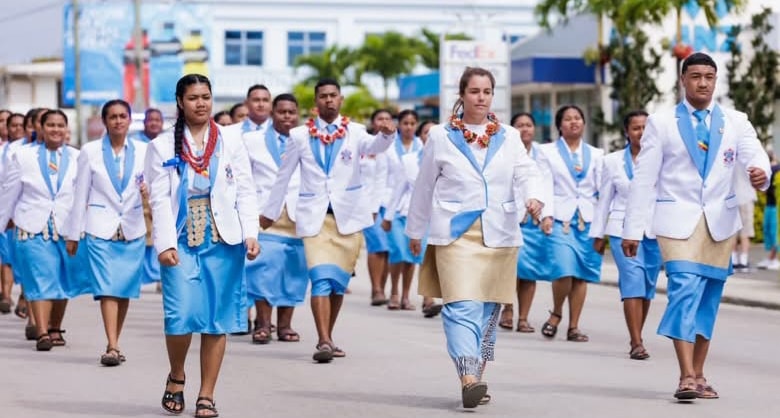Commentary – The annual procession of Tongan schools to honour Parliament’s closing and opening is a cherished tradition, where uniforms gleam and students stand with pride.

Last week’s parading marked the fourth year since Parliamentary sessions relocated from Nukuʻalofa to Tofoa in 2021.
While all school positions along the parliamentary procession route hold significance, certain school placements, particularly Apifo’ou College’s consistent presence at the very doors of power, invite particular interest.
This begs the question: Why are these coveted positions reserved for select institutions while others are relegated to distant roads?
Would it be beneficial to establish a rotational system where positions change each year, allowing each school to take turns?
The Free Wesleyan Church’s Tupou College and Queen Sālote College parading and positioning themselves at the Royal Palace maintain the traditional royal connections established after the royal family helped found them.
Tonga College is positioned on the other side of Parliament’s door, but it logically belongs near Parliament as a government school.
But Apifo’ou, as a Catholic institution, appears to be an outlier. However, a whimsical yet revealing incident from the 1980s may explain its unique position.
When Heaven Intervened
As recounted by this writer, a former Apifo‘ou student, a rain-soaked march for the opening of the Parliament in about 1982 took a surreal turn.
When St Mary’s High School and St John’s High School, now Apifo‘ou, reached Parliament, the clouds parted, and rowdy, sun-dried students erupted in chatter.
The late Inspector Fakaanga Fifita’s desperate plea to quiet the students revealed what appeared to be the truth.
He made several unsuccessful attempts to calm down the students before ultimately issuing a serious warning, indicating that his previous warnings had been ignored.
He said further disruption will result in him recommending the Catholic schools’ removal from their privileged position.
To emphasise the severity of his concerns, he also remarked that St Mary’s and St John’s had been chosen to occupy the space beside Parliament’s main door because their immaculate uniforms represented Tonga well before Parliament and visiting dignitaries.
In Catholic tradition, the use of Marian blue and white in the school’s uniforms holds significant meaning, particularly in relation to the Blessed Virgin Mary.
The colour blue represents the divine and reflects the celestial mystery of the heavens, while white symbolises purity, holiness, and the radiant virtue of the Mother of God.
Fokotu’utu’u traditions
Fokotu’utu’u or vahe, or hierarchical positioning or distribution, is a significant Tongan cultural practice. This traditional arrangement organises people according to social status, particularly when it comes to our faiva and social activities.
Traditionally, the leftover food and other items from a celebratory feast are gathered and distributed among family members and feast donors.
This distribution follows a strict hierarchical order based on a prearranged list of contributors maintained by the hosting family. The arrangement must reflect each donor’s social status, and once finalised, names are called out accordingly.
In our group dances like lakalaka, the central vāhenga position must be occupied by royalty, chiefs, or the highest-status individuals from the village or church. All other positions follow this same hierarchical arrangement as the rest of the performers.
Schools’ positioning in parliamentary processions follows almost the same principle, with status and exceptional importance determining the placement.







